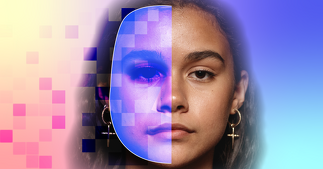Deepfake technology has moved from Hollywood special effects to your web browser. A free deepfake maker now lets anyone create convincing face-swap videos online. These ai deepfake maker tools use artificial intelligence to seamlessly replace faces in videos. The best platforms offer this technology without registration and without adding watermarks. But how does it work? And should you use it? This guide explains everything you need to know about free deepfake technology and its responsible use.
What is a Deepfake Maker?
A deepfake generator is a software application that involves artificial intelligence to swap faces on video using AI. The technology compares a target face photo to a source video. It then superimposes the target face on top of the subject of the source video and aligns the expressions, light and movement. What is left is a video in which the target person seems to be saying and doing what the source person actually did.
How Does AI Deepfake Technology Work?
The process involves several AI systems working together:
Face detection is the practice of identifying and tracking faces in source and target media.
Feature Mapping: This is the comparison of the features of the two faces.
Expression Transfer: Makes copies of the expressions on the source onto the target face.
Lighting Match: Makes the new face to be the same as the lighting of the original image.
Smooth Blending: The incorporation of the new face into the old photo in a smooth manner is done.
Key Features of a Quality Deepfake Tool
From testing various platforms, the best ai deepfake maker tools offer:
Lack of a watermark The end product contains unbranded videos.
No Registration Is Required: gives you the option to create instantly without registration.
High Resolution support: Uses high quality source videos.
Realistic blending with the appropriate lighting gives a result that appears natural.
Supports a range of Formats: Converts to a range of image and video formats.
The Realistic Limits of Current Deepfake Technology
While impressive, the technology has limitations:
Lighting Problems: Incompatibility of lighting between source and target can occur due to difference of angles Angle.
Dependency: Is most useful with comparable face angles and positions.
Processing Time Longer videos also take up a lot of processing time.
Quality Requirements: Prefers well-lit source materials so that best results can be accomplished.
Ethical Constraints: There are mechanisms in place to discourage misuse on a lot of platforms.
How to Create a Deepfake in 4 Steps
The process is more accessible than you might think:
Select Source Video: This is where you need to select a good video of good light and face-on objects.
Photo to be uploaded: Name Inserts: Enter a good frontal photo of the individual you want to add.
Video Processing: Get the AI to run the deepfake and make it.
Download Result: Get your own full video without a watermark.
Why No-Signup, No-Watermark Matters
The absence of registration requirements and watermarks is significant because:
Privacy Protection: No information is collected concerning the personalities in the development.
Clean outputs: Clean outputs may be utilized in other projects.
Quick Start: No obstacles to testing the technology.
Creative Freedom: there is no distracting branding on outputs.
Pro Tips for Best Deepfake Results
Maximize your success with these practical tips:
Match Angles: This matches face angles between source video and target photo.
Good Lighting: Both the source and target should have the same and clear lighting.
Quality Sources: Use the best material possible to capture a resolution Front-Facing Shots: Use the best material possible to capture a resolution
Test Short Clips: The minimum length of videos you can use to train your technique is 5-10 seconds.

Responsible Use of Deepfake Technology
This powerful technology requires ethical consideration:
Always Seek Permission: This is because when you want to use the image of a person, you should seek permission.
Clear Labelling: Release deepfakes.
Compliance with the law: Compliance with the domestic laws about image rights and content creation.
Good Uses: focus on the good uses e.g. entertainment, education and art.
Be honest in the use of deepfakes: Do not deceive or harm anyone with the help of deepfakes.
Creative Ethical Applications
Deepfake technology has positive uses:
Film Making: Low-budget filmmakers can create effects previously too expensive
Education: Historical figures can "deliver" their own speeches
Accessibility: Create content in multiple languages with the same presenter
Art Projects: Explore identity and transformation through digital art
Content Localization: Adapt content for different regions without reshooting
FAQ: Your Deepfake Questions Answered
Q: Are free deepfake makers free?
A: Most of them have a free basic usage and premium features are offered to power users. Always look at the pricing model of the particular platform.
Q: To what extent are the results realistic?
A: Good source materials can make results very convincing. But closer examination will usually show the telltales in the fringes and in light.
Q: Is deepfake technology legal?
A: The technology is not illegal, but the use must be in accordance with the laws concerning consent, copyright and fraud. Beware of using in an ethical and legal manner.
Q: Can deepfakes be detected?
A: Oh yes, there are technologies in the making that can determine deepfakes by examining lighting, blinking patterns, and digital artifacts.